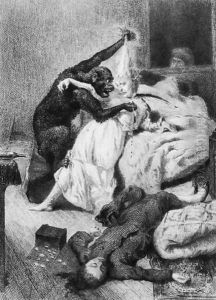Daniel Urrabieta Vierge Paintings
Daniel Urrabieta Vierge, born on March 5, 1851, in Madrid, Spain, was a pioneering illustrator whose work significantly influenced the development of modern illustration techniques, particularly in the use of the halftone process. Vierge's early life in Spain was marked by political unrest and cultural vibrancy, which fueled his artistic inclinations. In pursuit of his passion, he moved to Paris in the early 1870s, where he immersed himself in the city's thriving art scene and began to establish his career as an illustrator.
In Paris, Vierge found a fertile ground for his innovative spirit. He quickly became known for his detailed and dynamic illustrations, which were characterized by their vivid realism and emotional depth. His contributions to illustrated journals and books were groundbreaking, employing techniques that allowed for greater detail and subtlety in print than had previously been possible. This was particularly evident in his work for 'Pablo de Segovia,' a masterpiece that showcased his ability to bring narrative to life through visual storytelling.
Vierge's impact extended beyond his technical achievements. He was instrumental in elevating the status of the illustrator to that of a respected artist in his own right, challenging the perception that illustration was a lesser form of art. His work influenced a generation of artists and illustrators, including the likes of Toulouse-Lautrec and Steinlen, who drew inspiration from his innovative approaches to composition and form.
Despite his success, Vierge's career was abruptly interrupted in 1884 when he suffered a stroke that left his right hand paralyzed. Undeterred, he taught himself to draw with his left hand, demonstrating remarkable resilience and dedication to his craft. His later works, though produced under such challenging circumstances, continued to exhibit the high level of skill and creativity that had marked his earlier achievements.
Daniel Urrabieta Vierge died on May 28, 1904, in Boulogne-sur-Seine, France. His legacy lives on through his contributions to the art of illustration, which paved the way for future innovations in the field. Vierge's life and work remain a testament to the enduring power of resilience, innovation, and the pursuit of artistic excellence.











